Premium Only Content
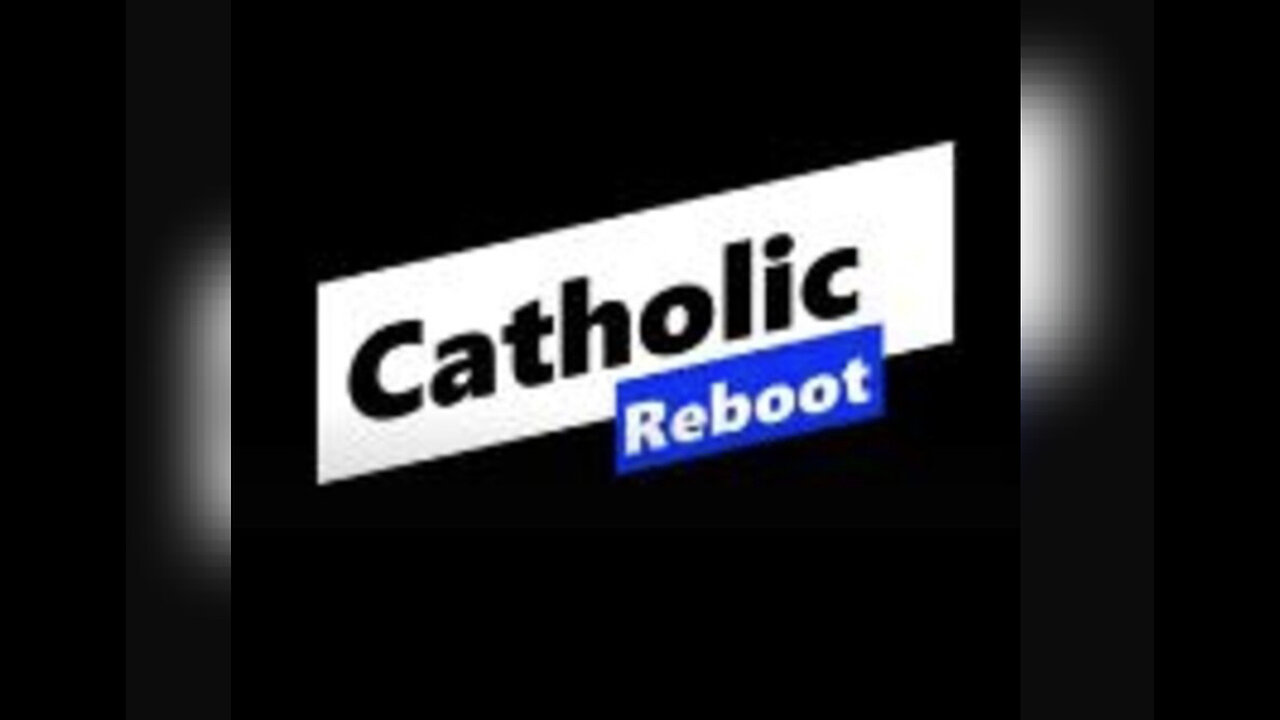
Episode 3288: Would the crisis have happened in the Church without Vatican II?
November 9, 2025
Feast of the Basilica of Our Savior (St. John Lateran)
www.catholic-reboot.com
Nightly Zoom Coordinates for Rosary:
Meeting ID: 865 8978 0399
Passcode: Wjjv4960!
Speak Lord for your Servant is Listening
Book Recommendation of the Day
St. Irenaeus of Lyon — Against Heresies (“Adversus Haereses”) circa 180 AD.
In it Irenaeus defends the Catholic Church’s claim to be the one true Church, founded on the apostles and handed down through bishops.
• He writes, “One should not seek among others the truth that can be easily gotten from the Church; for in her, as in a rich treasury, the apostles have placed all that pertains to truth…
Would the Crisis Have Happened Anyway? Vatican II and the Collapse of the 1970s Church
Many say that we blame too much on Vatican II and that the problems of the Church proceeded Vatican II and therefore the abuses, confusion, and moral collapse that engulfed the Church in the 1970s have happened even if Vatican II had never occurred?
Some scholars say yes that the Church was bound to be swept into the chaos of the modern world no matter what.
But others, especially from the traditional Catholic perspective, say no that Vatican II was not a passive victim of the times, but the very instrument through which the crisis was unleashed.
Today, we’ll explore both sides not to simply argue history, but to understand what this means for Catholics trying to rebuild the Faith today.
SEGMENT 1: THE ARGUMENT “IT WOULD HAVE HAPPENED ANYWAY”
Many historians and theologians even some who love the Church argue that the breakdown of Catholic life after Vatican II was inevitable, because of larger social forces.
They point to the Cultural Revolution of the 1960s the sexual revolution, student uprisings, the questioning of all authority. They say: Every institution was collapsing. The Church just happened to be caught in the same tide.
In their view, the 1970s would have seen:
• A collapse in priestly vocations,
• The loss of discipline in religious life,
• The rise of liberal theology and moral laxity,
• And the flight of Catholics from Sunday Mass even without Vatican II.
They claim that seminaries were already in trouble before 1962.
Modernist theology, condemned by Pope St. Pius X in Pascendi Dominici Gregis, had quietly entered many faculties long before the Council. They argue the Council simply revealed that rot it didn’t cause it.
They also argue that postwar optimism was to blame. After two world wars, people longed for peace, dialogue, and brotherhood. They believed mankind could build a better world through reason and tolerance. Even some bishops began to talk more about human dignity than divine grace, more about psychology than sin.
So these scholars conclude that Vatican II while flawed wasn’t the root cause. They say, “Don’t blame the Council for the world’s rebellion. The Church was facing an earthquake that would have come no matter what.”
SEGMENT 2: THE TRADITIONAL CATHOLIC RESPONSE
But from a traditional Catholic point of view, this argument misses something essential.
Yes the world was changing. But the Church had always been the rock that stood against the tide.
And what happened in the 1970s wasn’t just a social shift. It was a collapse of faith, and that collapse was unthinkable without Vatican II’s theological and liturgical revolution.
Let’s look at why.
1. The Council Dismantled the Church’s Defenses
For nearly two millennia, the Church had been a fortress guarding sacred tradition, defined dogma, and moral clarity. Vatican II replaced the language of militancy with the language of dialogue.
No longer the “Church Triumphant,” but the “Pilgrim People of God.”
No longer the one ark of salvation, but a Church that “subsists in” the Catholic faith a phrase vague enough to sow decades of confusion.
When that fortress was dismantled, the wolves entered.
2. Authority Abdicated Its Role
The Council’s ambiguous texts opened the door to revolution.
Take Lumen Gentium’s phrase “subsists in” which allowed some theologians to claim salvation exists equally in other religions.
That little phrase, “subsists in,” in Lumen Gentium (1964) paragraph 8 may be the most theologically consequential phrase in the entire Second Vatican Council.
It’s just two words, but it marked a doctrinal shift in how the Church defined herself and opened the floodgates to the confusion we still suffer from today.
Let’s unpack it carefully, step by step, from a Traditional Catholic perspective.
1. What the Church Taught Before Vatican II
Before 1964, the Catholic Church’s self-understanding was clear and absolute:
“The Mystical Body of Christ is the Catholic Church.”
— Mystici Corporis Christi, Pope Pius XII (1943)
In other words, the one true Church of Christ and the Roman Catholic Church were identical in substance not overlapping, not parallel, not partially shared.
Every pope from St. Peter through Pius XII upheld that the Church founded by Christ is the Catholic Church, and that salvation comes only through her.
This wasn’t arrogance; it was fidelity to Christ’s words:
“He who hears you, hears Me.” (Luke 10:16)
“Outside the Church there is no salvation.” (Extra Ecclesiam Nulla Salus)
This teaching was reiterated for centuries:
• The Fourth Lateran Council (1215) declared that there is “one universal Church of the faithful, outside of which no one at all is saved.”
• The Council of Florence (1442) reaffirmed the same truth in the Bull Cantate Domino.
• The Council of Trent and Pius IX’s Syllabus of Errors condemned the idea that all religions are equal paths to God.
So up to 1964, the Church clearly said: Christ’s Mystical Body is the Catholic Church not partly, not vaguely, not symbolically.
2. What Vatican II Changed with “Subsists In”
Then came Lumen Gentium, paragraph 8:
“This Church, constituted and organized in the world as a society, subsists in the Catholic Church, which is governed by the successor of Peter and by the bishops in communion with him…”
At first glance, that seems harmless. But the Latin word subsistit in replaced what should have been the word est (“is”).
That small change was intentional and it redefined how theologians could speak about the Church.
The key shift:
• Before: The Church of Christ is the Catholic Church (one and the same).
• After: The Church of Christ subsists in the Catholic Church implying that the Church of Christ may also exist in some way outside the visible boundaries of Catholicism.
This gave theological cover for the idea that elements of grace and truth exist “in other Christian communities” a point further developed in Unitatis Redintegratio (the decree on ecumenism).
While earlier popes had acknowledged that non-Catholics could receive grace through the Church even unknowingly, Vatican II shifted the focus from the Church as the source of that grace to the communities themselves as partial vessels of it.
That is a massive theological change.
Why It Was Revolutionary
a. It Undermined the Doctrine of the One True Church
By saying the Church “subsists in” the Catholic Church, theologians could claim that the Church of Christ is broader than the Catholic Church that Protestants, Orthodox, and even non-Christians share somehow in the same salvific structure.
This contradicted centuries of magisterial clarity that there is no salvation outside the Catholic Church, except by extraordinary means through her.
b. It Opened the Door to Religious Indifferentism
Once theologians argued that “elements of truth and sanctification” exist in other religions, the next step was to claim those religions are valid paths to salvation.
This gave rise to:
• Ecumenical “unity without conversion,”
• Interfaith prayer services (like Assisi, 1986),
• The idea that “all sincere people go to heaven regardless of creed.”
It blurred the missionary imperative.
Why convert the world if all religions already contain Christ in some way?
c. It Weakened Evangelization
Prior to Vatican II, missionary zeal was driven by the urgency of salvation.
After Lumen Gentium, many clergy and missionaries adopted a “dialogue” approach instead of preaching conversion.
Bishop Fulton Sheen once said:
“The greatest tragedy in the Church today is that the sense of sin has been lost.”
Likewise, the sense of urgency for salvation was lost when theologians began to believe everyone is already “in” the Church invisibly.
d. It Introduced Theological Relativism into Ecclesiology
The word “subsists” allowed theologians like Karl Rahner, Hans Küng, and Edward Schillebeeckx to argue that the “Church of Christ” is a kind of invisible spiritual reality that includes all believers in Christ, not just Catholics.
This made the visible structure of the Church hierarchy, sacraments, authority seem optional.
That idea later fed directly into the “synodal” and “pluralistic” theology of today’s Church, where doctrinal unity is replaced by diversity of belief.
4. The Church’s Attempt to Clarify - Too Little, Too Late
In 2000, the Congregation for the Doctrine of the Faith (under Cardinal Ratzinger) tried to clarify in Dominus Iesus that:
“The Church of Christ continues to exist fully only in the Catholic Church.”
This was meant to close the loophole, but the damage was already done.
Decades of catechesis, seminary formation, and ecumenical activity had already taught Catholics that “we’re all one big family of believers.”
As Cardinal Ratzinger later admitted, the phrase subsists in had been “deliberately chosen to open a broader perspective,” and that perspective became a permanent source of doctrinal confusion.
5. The Traditional Catholic Judgment
Traditional theologians like Archbishop Lefebvre, Romano Amerio (Iota Unum), and Dietrich von Hildebrand saw this phrase as the doctrinal Trojan Horse of Vatican II.
It didn’t openly deny Catholic truth; it simply relativized it making it sound as if the Church was just “the fullest expression” among many churches.
Archbishop Lefebvre warned:
“When you say the Church of Christ subsists in the Catholic Church, you are suggesting that it may also subsist elsewhere. That is not Catholic theology that is Protestant language.”
And indeed, Protestant observers at Vatican II who were invited to help draft parts of the Council documents praised Lumen Gentium for being “the first time Rome recognized the validity of our ecclesial life.”
6. Why It Was So Destructive
The consequences were not just theoretical they were pastoral, moral, and spiritual:
• Ecumenism replaced evangelization.
• Doctrinal certainty was replaced by “dialogue.”
• Missionary orders declined.
• Catechesis softened.
• The sense of the Church as the ark of salvation disappeared.
Once Catholics were told that all religions contain truth, they stopped believing theirs contained the whole truth.
The result? A generation that no longer knows what it means to be Catholic or why it matters.
The Church of Christ is the Catholic Church the Mystical Body united under Peter and the sacraments.
Other religions may have fragments of truth, but they are not other paths to salvation. Any soul saved outside visible membership is still saved through the merits of Christ and His Church, not through their religion.
That’s why the phrase “subsists in” must be reinterpreted or abandoned in favor of the truth the Church always taught the truth that sanctified the martyrs, inspired the missionaries, and converted nations.
After that they hit the Church with Gaudium et Spes, which praised modern culture while downplaying its hostility to Christ.
Archbishop Lefebvre once said:
“The Council opened the Church to the world but it was the world that entered the Church.”
Authority did not stop the chaos; it blessed it in the name of “pastoral renewal.”
The faithful were told that altar rails were “unwelcoming,” Latin “inaccessible,” and tradition “rigid.” The bishops, rather than guarding the flock, handed the keys of the sanctuary to modernists.
The Liturgical Revolution Was Institutional
The sexual revolution may have influenced priests and nuns, but it did not create the Novus Ordo Mass. That came from within from the Consilium, led by Archbishop Annibale Bugnini, empowered by the Council’s reform mandate.
The Mass was not merely translated; it was rewritten.
The altar was turned around, the sacred language silenced, and centuries of rubrics safeguards of the faith were abolished in a few short years.
Culture can corrupt morals, but only Church authority can authorize sacrilege.
Confusion Breeds Apostasy
When theology becomes ambiguous, morality collapses.
By shifting from saving souls to “human fraternity,” the Church blurred the absolute nature of truth. Seminaries emptied, religious sisters removed habits, and catechesis was replaced by “values education.”
These are not cultural accidents they are the theological fruits of a Council that sought peace with the world instead of war against sin.
SEGMENT 3: WAS IT PROVIDENCE OR PERMISSIVENESS?
Here lies the deeper question:
Was the post-Conciliar collapse part of God’s providential plan, or the fruit of human disobedience?
Traditional theologians like Dietrich von Hildebrand, Romano Amerio, and Archbishop Lefebvre saw it clearly: the crisis was not inevitable it was chosen.
Chosen by those who believed the Church must be “updated” to survive in the modern world.
But as history shows, every time the Church embraced the world, she was crucified by it.
The saints of every age from Athanasius to Catherine of Siena did not reform the Church by compromising with the world. They reformed her by returning to the Cross.
Pope St. Pius X foresaw it decades earlier, warning:
“Modernism is the synthesis of all heresies. If allowed to spread, it will destroy not only faith but all religion.”
He was right.
Without Vatican II’s ambiguous “pastoral” reforms, the modernists might have remained underground. Instead, they were given the microphone, the altar, and the seminaries.
SEGMENT 4: WHERE DO WE GO FROM HERE?
It’s tempting to think this debate is only about the past. But it’s not.
It’s about how we the faithful remnant live the Faith today.
If we accept the narrative that “the 1970s collapse was inevitable,” then we excuse the choices that caused it.
But if we see Vatican II as a historical rupture, we can begin the work of rebuilding Catholic life on the foundations that were abandoned.
That means:
• Restoring the Traditional Latin Mass the same sacrifice of Calvary offered by the saints for centuries.
• Teaching the Catechism of the Council of Trent and the Baltimore Catechism not the vague “values-based” education of the 1970s.
• Forming families that resist the world’s poison and live according to divine order men as protectors, women as nurturers, children as souls to be sanctified.
• Supporting priests and bishops who guard Tradition, even if they are persecuted for it.
The renewal of the Church will not come from committees or synods it will come from holiness, reverence, and fidelity to what was handed down.
CONCLUSION
In the end, whether Vatican II was the cause or the catalyst, it marked the moment when the Church lowered her defenses.
The darkness that followed was not inevitable. It was the result of human pride disguised as progress.
But Our Lord is faithful. The Church cannot die she can only be purified.
And as Our Lady promised at Fatima: “In the end, my Immaculate Heart will triumph.”
Epistle – Apocalypse 21:2–5
“And I, John, saw the holy city, the new Jerusalem, coming down out of heaven from God, prepared as a bride adorned for her husband. And I heard a great voice saying: Behold the tabernacle of God with men, and He will dwell with them.”
Reflection on the Epistle
The Apostle St. John beholds the ultimate vision the Heavenly Jerusalem, the perfect temple of God where every soul is united to Christ. The “tabernacle of God with men” reveals that heaven begins here, in the heart of one who is purified and indwelt by the Holy Spirit.
This passage has always been linked to the Church as both the Bride of Christ and the Temple of the Holy Spirit. Yet today, we must see in it also a prophecy: as the earthly Church faces decline, scandals, and desecration, God is preparing a renewed Church, purified and made radiant by the sufferings of her faithful remnant.
In the traditional liturgy, the dedication of a church includes the anointing of its walls with chrism symbolizing that the Church, like the soul, is consecrated for divine indwelling. Likewise, your soul, through baptism and confirmation, was anointed to become a living sanctuary.
But how many Catholics today have allowed that sanctuary to be defiled? How many temples of the Holy Spirit have been turned into marketplaces of vanity, compromise, and sin?
Christ will not dwell in a soul that refuses to be cleansed. Thus, this feast calls each of us to a personal restoration to rebuild the inner altar, rekindle devotion, and rededicate our lives to the King of Kings who makes all things new.
Gospel – Luke 19:1–10
“And Jesus entered and passed through Jericho. And behold, there was a man named Zacchaeus… who sought to see Jesus… and when Jesus came to the place, He looked up, and said to him: Zacchaeus, make haste and come down; for today I must abide in thy house.”
Reflection on the Gospel
In today’s Gospel, Christ enters Jericho a city symbolic of the fallen world and calls out to Zacchaeus, the tax collector, despised for his sins and greed. But notice the divine initiative: Christ looks up first. Grace seeks out the sinner before the sinner seeks grace.
Zacchaeus, small in stature yet great in desire, climbs the sycamore tree to see Jesus a symbol of the sinner rising above the crowd of worldliness to gain a glimpse of God. The Lord rewards that effort with the words: “Today I must abide in thy house.”
This Gospel mirrors the Epistle: Christ desires to make His dwelling in the human soul. Zacchaeus’ house becomes, in a sense, a newly dedicated temple one purified by repentance and filled with divine presence.
For us, the lesson is urgent and deeply traditional: the true renewal of the Church begins not in Rome or councils, but in the humble, repentant soul that welcomes Christ without condition. Just as Zacchaeus immediately vowed restitution and conversion, so must we. It is not enough to see Christ from a distance He must abide within us.
Feast of the Basilica of Our Savior (St. John Lateran)
The Lateran Basilica, consecrated in the 4th century, is the oldest church in Christendom and the official cathedral of the Pope as Bishop of Rome. Its Latin inscription still reads: “Omnium Urbis et Orbis Ecclesiarum Mater et Caput”, “The Mother and Head of all the Churches of the City and of the World.”
This feast teaches us two profound truths:
1. The Church is visible and hierarchical, built on Peter’s confession of faith.
2. The Church is spiritual and mystical, the communion of souls sanctified by grace.
St. Augustine once said:
“The temple of God is holy, and that temple are you.”
The Lateran’s marble walls may crumble, but the living stones faithful Catholics who uphold Tradition remain the true Church of Christ, indestructible and radiant in the midst of persecution.
Practical Application
• Examine your heart: Is Christ dwelling there? Or has sin driven Him away?
• Frequent confession: The cleansing of the soul is the rededication of the temple.
• Sanctify your home: Let your family altar, prayer, and devotion to the Rosary make your dwelling a domestic church.
• Support sacred tradition: The architecture, music, and liturgy of the Church are outward signs of the inward glory of God’s dwelling among us. Defend them.
Conclusionary Prayer
O God, who from living and chosen stones dost prepare an everlasting dwelling for Thy Majesty, grant that Thy faithful, formed by Thy grace into a holy temple of Thy Spirit, may abide in Thee forever.
Through the intercession of the Blessed Virgin Mary, the glorious St. John Lateran, and all the saints, cleanse Thy Church on earth and make us worthy to dwell in the heavenly Jerusalem.
St. John Lateran, pray for us.
Sacred Heart of Jesus, dwell within us.
Immaculate Heart of Mary, intercede for us.
-
 2:57:51
2:57:51
TimcastIRL
4 hours agoGOP Rep Threatens Hillary Clinton With CRIMINAL CHARGES Over Epstein | Timcast IRL
218K67 -
 2:36:45
2:36:45
Laura Loomer
3 hours agoEP157: Marjorie TRAITOR Greene Turns On Trump
24.4K65 -
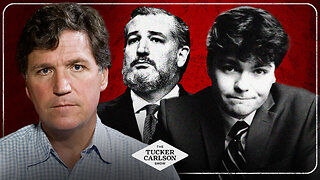 1:35:44
1:35:44
Tucker Carlson
4 hours agoWhy Is Nick Fuentes So Popular? Nikki Haley's Son Explains.
55.4K376 -
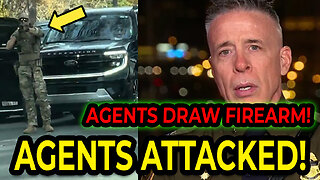 41:11
41:11
T-SPLY
2 hours agoProtesters Clash With Border Patrol In Charlotte!
13.5K9 -
 LIVE
LIVE
ThatStarWarsGirl
2 hours agoTSWG LIVE: I'm Back From My Channel Strike! Let's Discuss The Elephant In The Room
281 watching -
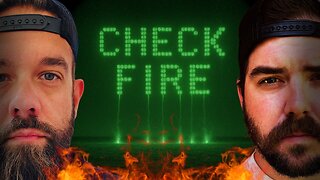 LIVE
LIVE
I_Came_With_Fire_Podcast
14 hours agoAmerica's Hidden War | The Propaganda Through Line | An Ally Aids an Enemy
204 watching -
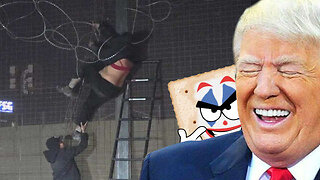 2:14:16
2:14:16
TheSaltyCracker
4 hours agoDEMs Have Real Bad Week ReeEEStream 11-19-25
107K171 -
 LIVE
LIVE
SpartakusLIVE
5 hours agoNEW Redsec UPDATE || STACKS OF LOOT LATER?!
225 watching -
 2:34:17
2:34:17
Barry Cunningham
6 hours agoMELANIA TRUMP AND USHA VANCE VISIT MILITARY FAMILIES | DEMOCRAT SEDITION & MASSIVE HYPOCRISY
43.2K14 -
 1:17:12
1:17:12
ThisIsDeLaCruz
3 hours ago $0.45 earnedRunning Sound for The Weeknd
6.82K